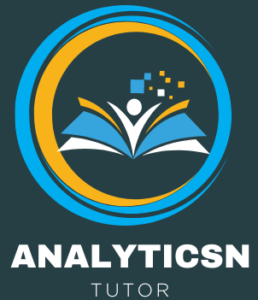Forecasting Analysis: A Comprehensive Overview
Forecasting Analysis is an invaluable tool for researchers, data analysts, and business professionals, enabling them to make informed predictions about future events based on historical data. By analyzing past patterns and trends, forecasting can provide critical insights into future outcomes, allowing for better decision-making, strategic planning, and resource allocation. In this article, we delve into the nuances of Forecasting Analysis, exploring its types, applications, and benefits for business and financial planning.
What is Forecasting?
Forecasting is the process of making predictions about future events based on the analysis of past and present data. It identifies trends, patterns, and relationships within the data to make informed estimates about future outcomes. For example, sales forecasting estimates how much a company expects to sell within a particular period, based on past performance and market conditions. Similarly, financial forecasting involves predicting future financial outcomes, helping companies plan for growth, expenses, and investments.
Types of Forecasting:
- Sales Forecasting: A prediction of future sales volumes, which helps businesses understand market demand, manage inventory, and optimize marketing strategies.
- Financial Forecasting: Estimations of a company's future financial performance, crucial for budgeting, managing cash flow, and securing funding for capital projects.
- Demand Forecasting: Predicting customer demand to ensure that the right products or services are available when needed, avoiding stockouts or overproduction.
- Market Forecasting: Anticipating market trends, customer behaviors, and competitive landscapes to make informed business decisions and stay ahead in the industry.
- Operational Forecasting: Estimating internal business operations, such as staffing requirements, production levels, and resource allocation, to improve efficiency and cut costs.
Importance of Forecasting in Business
Accurate forecasting is critical to business success. Companies that can predict future sales, market trends, and financial outcomes are better equipped to navigate uncertainties, allocate resources wisely, and develop strategies for growth. Key benefits of forecasting include:
- Informed Decision-Making: Forecasting provides data-driven insights, empowering decision-makers to create actionable business strategies.
- Risk Mitigation: Forecasting helps businesses identify potential risks and challenges, enabling them to implement risk management strategies proactively.
- Efficient Resource Allocation: By predicting future needs, companies can allocate their resources (such as staffing, inventory, and finances) more efficiently, preventing wastage and improving productivity.
- Improved Financial Planning: Financial forecasting helps businesses make informed decisions regarding capital investment, budgeting, and expansion.
- Enhanced Market Competitiveness: Businesses that leverage forecasting can stay ahead of competitors by anticipating market shifts and adjusting their strategies accordingly.
Methods of Forecasting Analysis
There are several methods of forecasting, each with its own set of tools and techniques. These methods are categorized into three broad types:
Qualitative Techniques:
- These rely on human judgment, expert opinions, and market research to make predictions. They are most commonly used when historical data is limited or unreliable.
- Examples include: Delphi method, market research, panel consensus, and executive judgment.
Time Series Analysis and Projection:
- These methods use historical data to identify trends, cycles, and patterns that are expected to continue in the future.
- Examples include: Moving averages, exponential smoothing, and trend projection.
Causal Models:
- These involve identifying relationships between independent variables (predictors) and dependent variables (outcomes). They are often used to assess how changes in one variable impact another.
- Examples include: Input-output models, economic models, intention-to-buy surveys, and multiple regression models.
Key Forecasting Techniques
Moving Average and Exponential Smoothing: These time series techniques are useful for identifying trends by smoothing out short-term fluctuations. Moving averages calculate the average of data points over a specific period, while exponential smoothing assigns exponentially decreasing weights to older data points.
Input-Output Models: These models review the interdepartmental flow of goods and services, whether within an economy or within a business, to forecast how changes in one area will affect others.
Multiple-Regression Models: These statistical models evaluate how multiple independent variables influence a single dependent variable. Multiple regression is widely used in economic forecasting, market research, and social sciences.
Intention-to-Buy and Anticipation Surveys: Surveys that assess consumers' purchasing intentions or opinions on upcoming products can provide valuable qualitative data for predicting future market demand.
Applications of Forecasting Analysis
Forecasting has a wide range of applications in various industries. Some common uses include:
- Business Operations: Companies use forecasting to predict future sales, optimize supply chains, and ensure the availability of goods and services.
- Financial Planning: Financial forecasting helps businesses plan for cash flow, investments, and budgeting, providing a clear picture of future financial health.
- Human Resources: By forecasting workforce needs, businesses can plan for recruitment, training, and staffing requirements.
- Marketing: Marketing professionals use forecasting to predict customer behavior, improve campaign effectiveness, and adjust pricing strategies based on anticipated market trends.
- Production and Inventory Management: Forecasting helps ensure that production levels align with customer demand, reducing inventory costs and preventing overproduction.
Benefits of Forecasting for Businesses
- Strategic Planning: Forecasting helps businesses develop strategies based on informed predictions, ensuring that they remain competitive and aligned with market trends.
- Budgeting and Financial Management: Accurate financial forecasts enable companies to manage their budgets effectively, ensuring they have sufficient capital for investment, growth, and unexpected challenges.
- Operational Efficiency: By predicting future staffing and production needs, businesses can optimize their operations, reducing costs and improving productivity.
- Risk Reduction: Forecasting allows companies to anticipate potential risks and challenges, enabling them to implement risk mitigation strategies early on.
- Innovation and Creativity: Forecasting encourages businesses to stay ahead of trends, fostering innovation and creative problem-solving as they adapt to changing market conditions.
Forecasting in Practice at AnalyticsN
At AnalyticsN, we leverage forecasting techniques to help businesses with financial research, operations planning, and market analysis. Our team uses tools like SPSS to analyze historical data and predict future trends, providing businesses with the insights needed to make strategic decisions. Whether it's conducting efficient market research or making data-driven financial forecasts, our forecasting solutions help organizations enhance creativity, improve decision-making, and achieve sustainable growth.
